Содержание
- 2. Anatomy of the bile ducts Bile Duct Diseases - Harvard Health Anatomy and flow of bile.
- 3. Anatomy of hepatic lobule Substrates from sinusoid normally pass into the hepatocytes. After metabolic transformation, some
- 4. Definition: any impairment of secretion and release of bile from the hepatocyte to the major duodenal
- 5. Cholemia Homeostasis disorders: vascular dilatation, reduced peripheral vascular resistance and total blood volume, bradycardia, vagal effects,
- 6. Painful and painless obstructive jaundice Various rates of biliary hypertension development (fast, sudden or slow, gradual)
- 7. PAINFUL OBSTRUCTIVE JAUNDICE 5
- 8. Cholangiolithiasis Gallstone migration from the gallbladder. Obstruction of common hepatic duct and common bile duct. Obstruction
- 9. Stenosis of major duodenal papilla Causes: cholangitis, pancreatitis, instrumental injury, gallstone passage, parapapillary diverticulum, functional disorders
- 10. Choledocholithiasis. Ultrasound Dilatation of the bile ducts, doubling of the tubular structure Calculi in the bile
- 11. ERCP ERCP – diagnosis of calculi (а, arrow), hepatic duct injury after laparoscopic surgery (б, arrow).
- 12. PTC Mirizzi syndrome. Hepatic duct calculi. Sensitivity - 90-100%. 10
- 13. MRCP. МR-cholangiography Imaging of gallbladder, bile ducts and calculi (arrows) without contrast enhancement. Sensitivity 85–88%. 11
- 14. ERCP vs. MRCP ERCP A relatively invasive method requires contrast agent injection into the bile ducts,
- 15. Mirizzi syndrome Type I - narrowing of common hepatic duct caused by calculus-induced compression of Hartmann's
- 16. Bile duct cysts. Classification Todani classification Cysts are diagnosed in patients aged 3 months - 16
- 17. Caroli disease (cystic lesion type V) Surgery – liver resection 15
- 18. Primary sclerosing cholangitis Chronic course Cause is unclear Multiple strictures and dilatations of intrahepatic bile ducts
- 19. Haemobilia Damage to the liver or intrahepatic bile ducts, local liver necrosis. Haemobilia is a secondary
- 20. Parasitic invasion Opisthorchiasis (Ob, Volga basin, East Asia) Echinococcosis, alveococcosis, ascariasis, Fascioliasis– Fasciola gigantica Schistosomiasis –
- 21. Symptoms and diagnosis of painful obstructive jaundice Acute onset Scleral icterus Pain attack Dark urine, stool
- 22. ACUTE CHOLANGITIS 20
- 23. Acute cholangitis (AC) AC is an infectious inflammation of the bile ducts. Most often, AC develops
- 24. Cholangiovenous reflux Corrosion casting. Scanning electron microscopy Secretory pressure. Microbial metabolite pressure. L., Pellegrini C.A., Way
- 25. Symptoms of acute cholangitis Chills, fever Leukocytosis Infection Symptoms associated with biliary hypertension and obstructive jaundice
- 26. Causes of short-term SIRS and symptoms of sepsis Two factors: Large purulent surface of gallbladder, direct
- 27. Criteria of SIRS and sepsis Body temperature > 38ºC or Heart rate > 90 beats per
- 28. Organ dysfunction criteria CVS – hypotension requiring dopamine support CNS – impaired consciousness Respiratory system –
- 29. Renal failure in acute cholangitis Kidney is a main organ secreting bile components – cholemic nephropathy.
- 30. Management of acute cholangitis (choledocholithiasis, n = 613) Objective: to interrupt the course of cholangitis, to
- 31. Treatment of pyogenic liver abscesses in acute cholangitis (n = 19) The main requirement is biliary
- 32. Stages of acute cholangitis and Tokyo Guidelines (2007) *Overall and antimicrobial therapy Emergency biliary decompression is
- 33. Chronic cholangitis Chronic cholangitis may be diagnosed in patients with: post-traumatic strictures; primary sclerosing cholangitis; Klatskin
- 34. Chronic cholangitis in patients with AIDS Causative agents : Cryptosporidium and Cytomegalovirus. Features: stenosis of major
- 35. Conclusion Acute cholangitis is characterized by purulent process proceeding on the background of cholemia and acholia
- 36. PAINLESS OBSTRUCTIVE JAUNDICE 35
- 37. Tumors of bile ducts Progressive biliary obstruction. Jaundice is the first, but not an early symptom.
- 38. Symptoms of painless obstructive jaundice Icteric sclera and skin Itching Dark urine and stool discoloration No
- 39. Cancer of hepatic and common bile ducts Common hepatic duct (Klatskin tumor) 56% Common bile duct
- 40. Classification of hepatic duct cancer (Bismuth) 39
- 41. MR-cholangiography in Klatskin tumor 40
- 42. Pancreatic head cancer. MRCP 41
- 43. Differential diagnosis of obstructive and parenchymatous jaundice Patients with a painless obstructive jaundice do not notice
- 44. Functional and morphological features of liver in painless obstructive jaundice Increased levels of direct and indirect
- 45. Metabolic disorders in painless obstructive jaundice Reduced ATP and local blood flow velocity are associated with
- 46. Conclusion on disorders arising in painless obstructive jaundice Painless obstructive jaundice causes severe functional and morphological
- 47. PREOPERATIVE DECOMPRESSION 46
- 48. Preoperative decompression of the bile ducts Methods of preoperative biliary decompression: Percutaneous cholangiostomy. Endoscopic nasobiliary drainage
- 49. Can bile duct decompression per se impair liver function? In a 12-day obstructive jaundice, decrease of
- 50. Comparison of various methods of bile duct decompression (n = 205) NBD-85, PTC-37, cholecystostomy-63, CBD decompression
- 51. Morbidity and mortality in various rates of bile duct decompression * – p Slow decompression rate
- 52. Positive and negative aspects of preoperative biliary decompression 51 Opinions on stenting are still controversial. However,
- 53. Features of preoperative biliary decompression in Klatskin tumor 52 Radical surgery for Klatskin tumor implies extended
- 55. Скачать презентацию
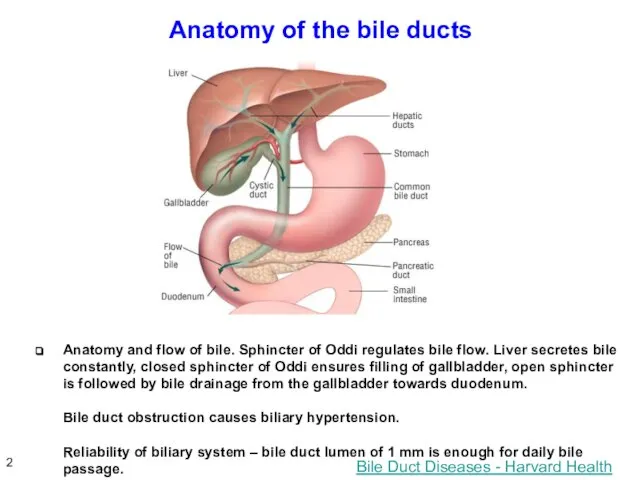

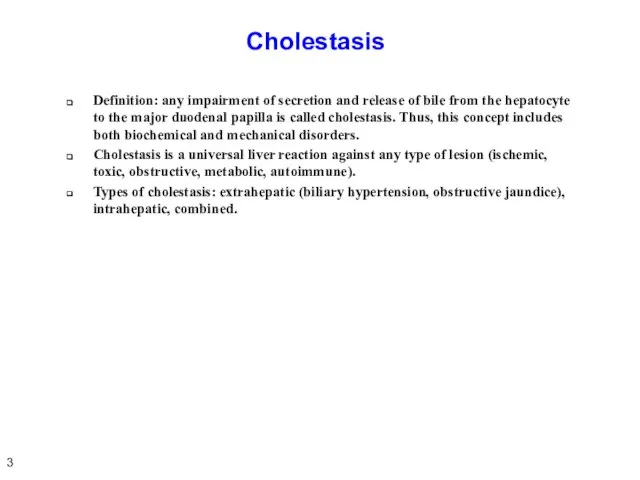
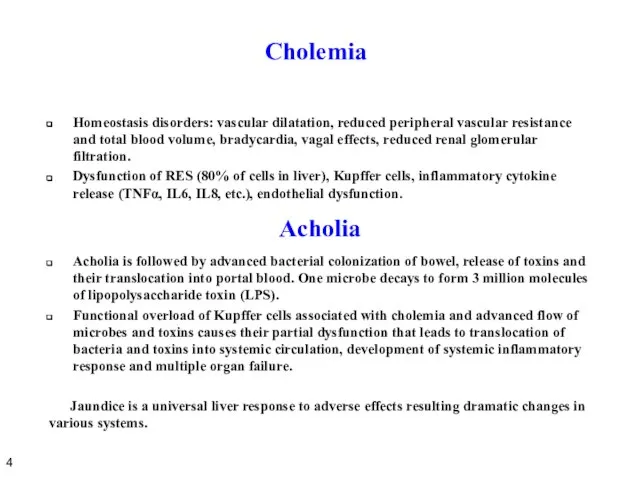
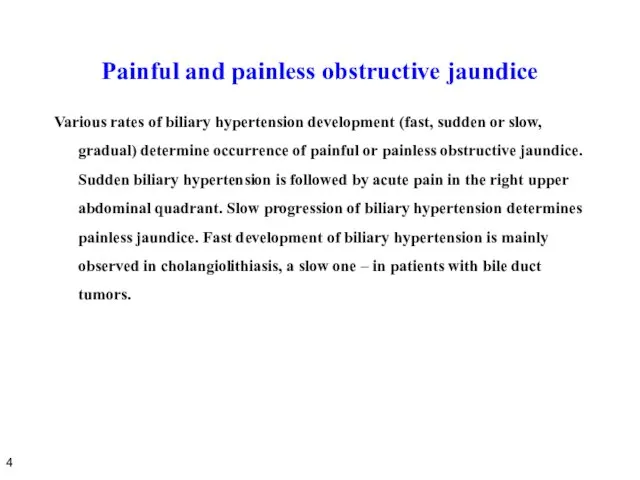


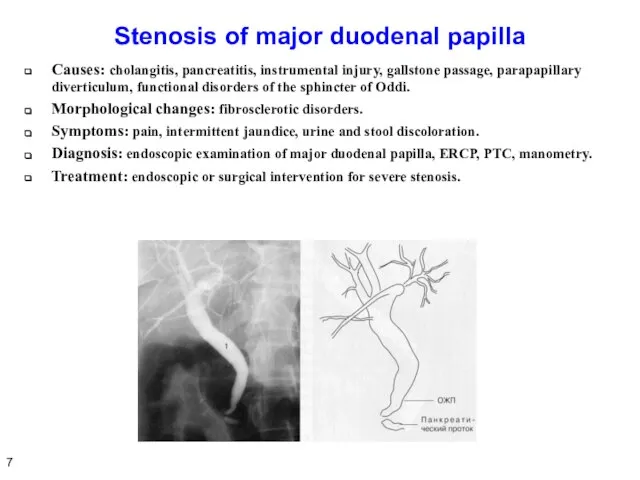
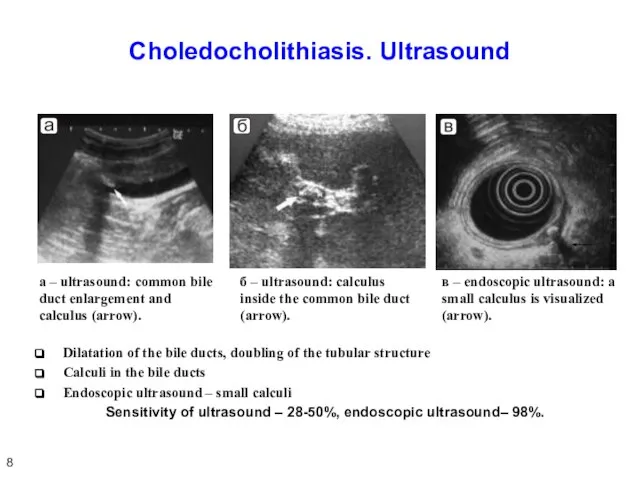

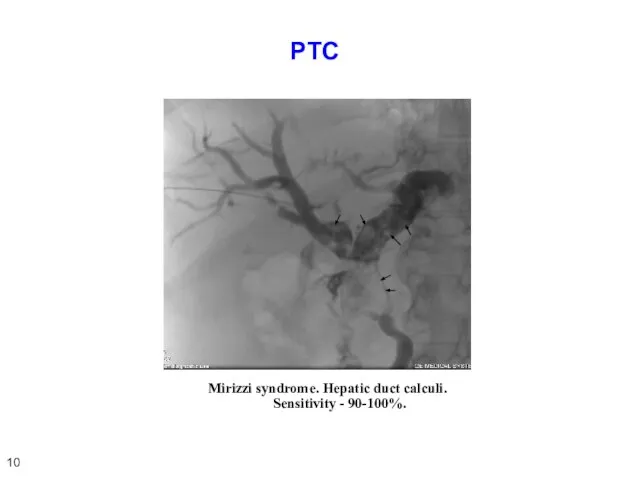
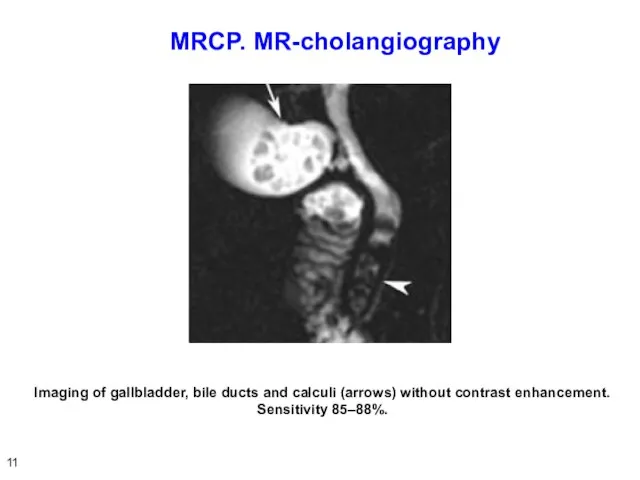
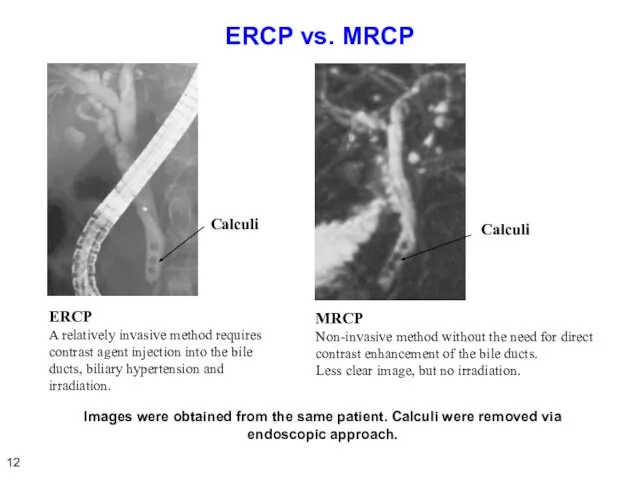


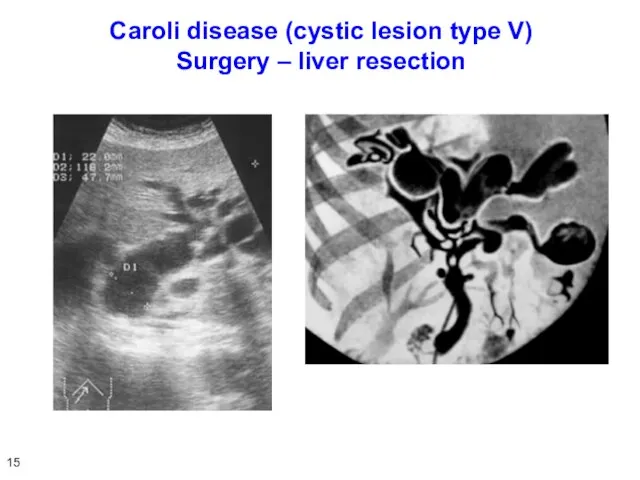
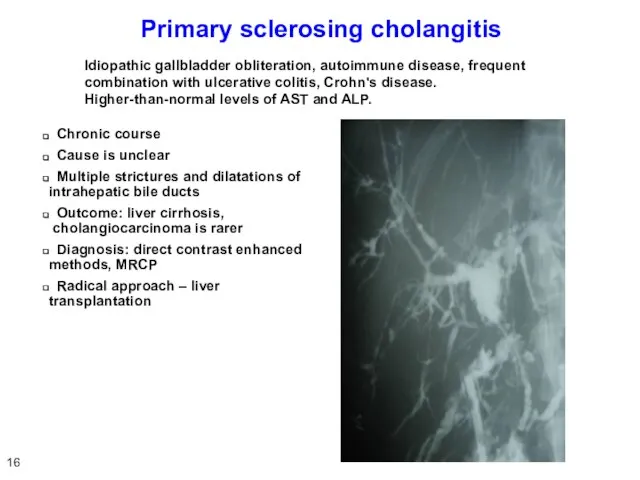

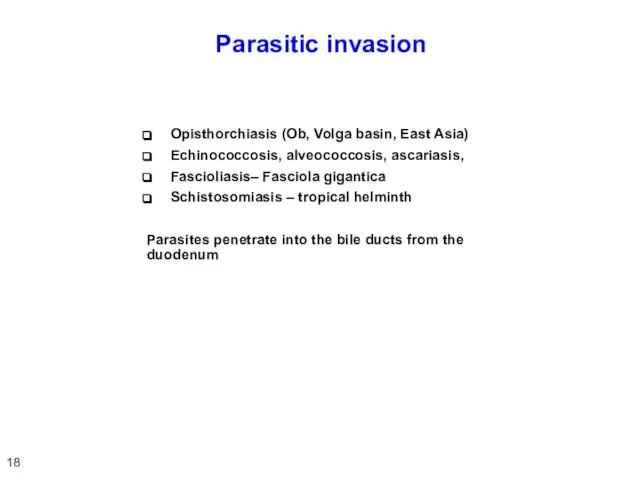
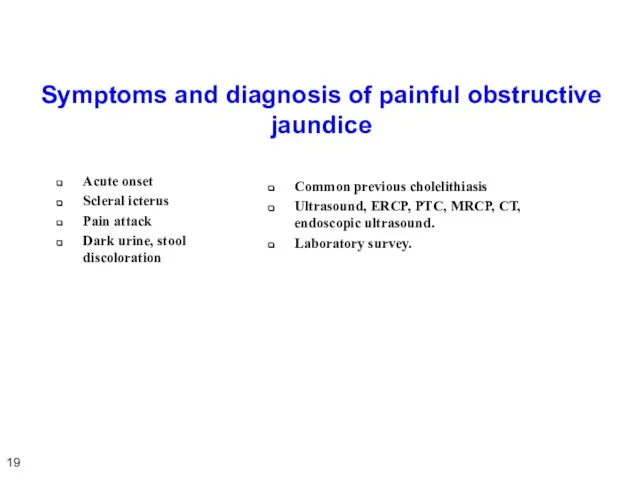
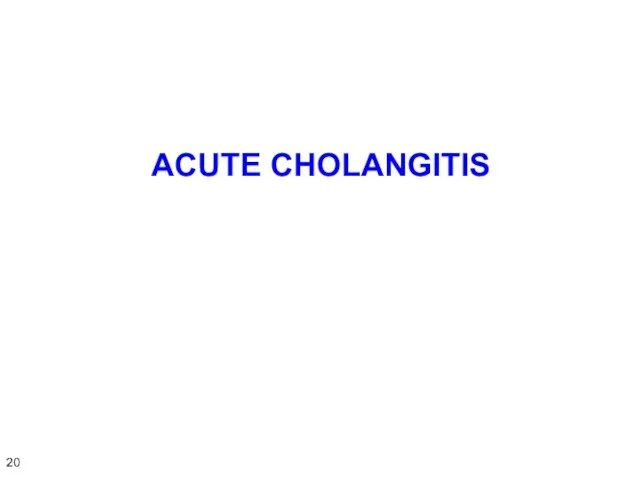
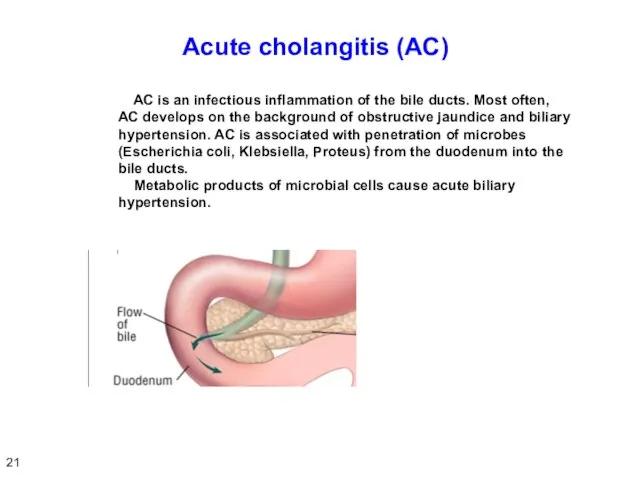
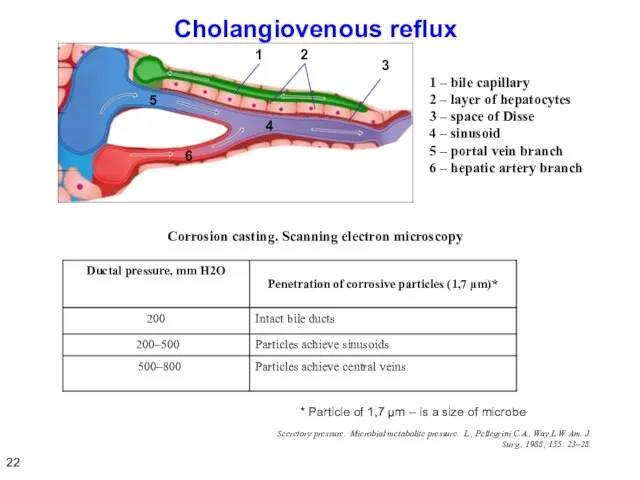

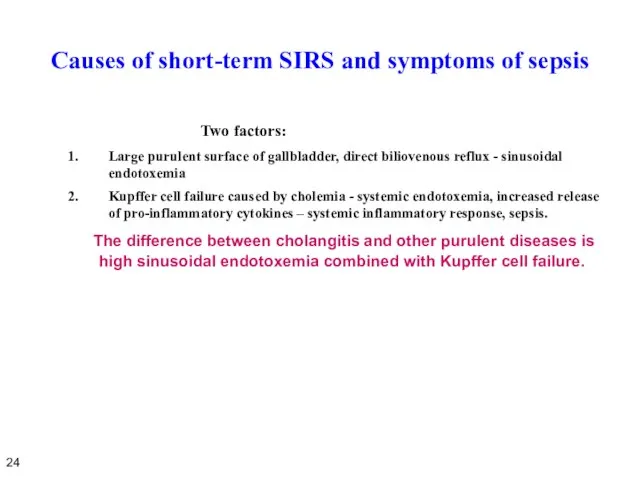

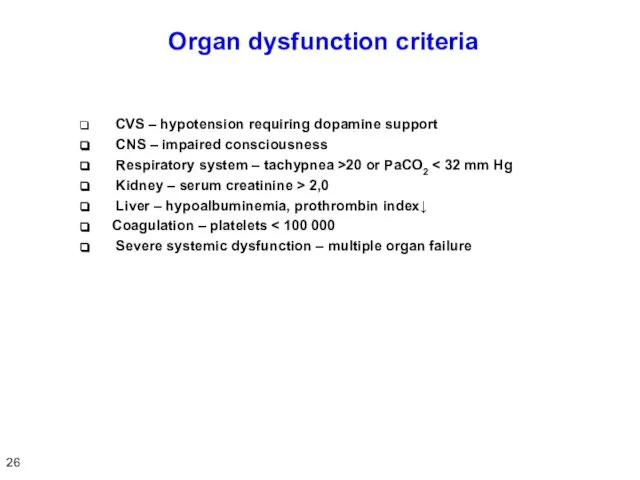

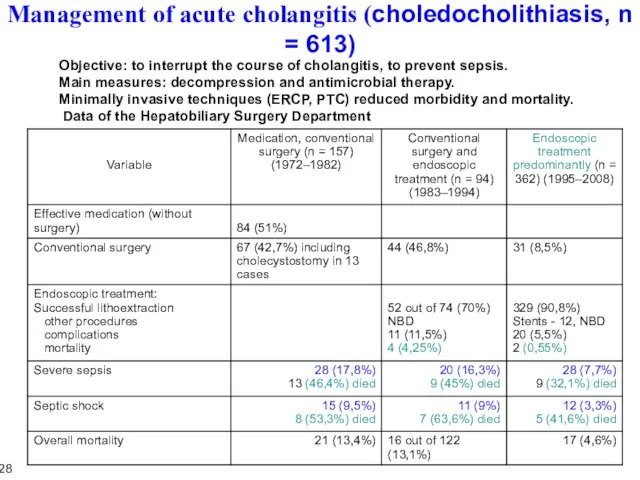



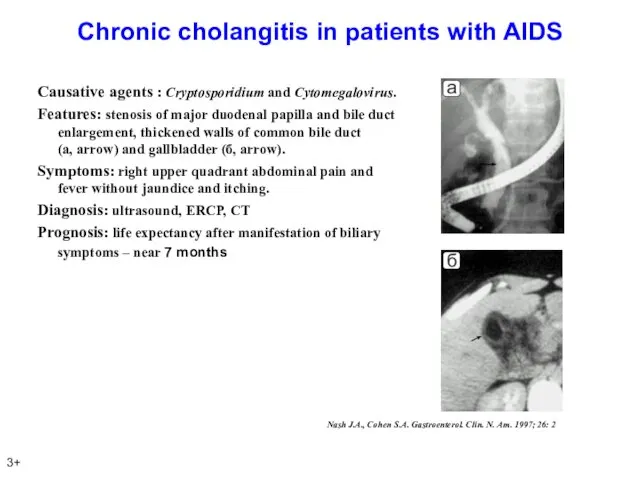
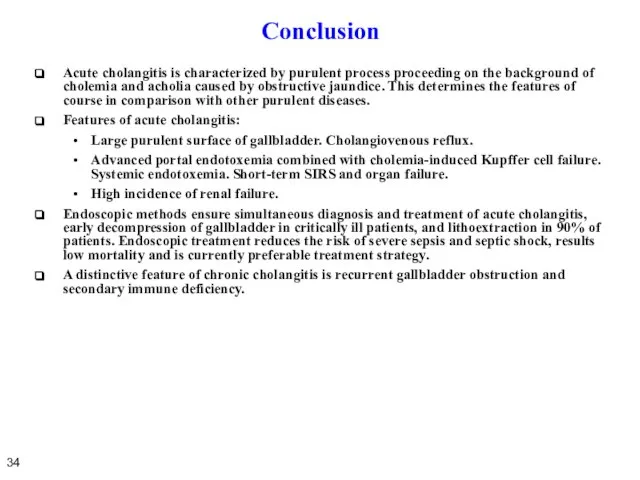

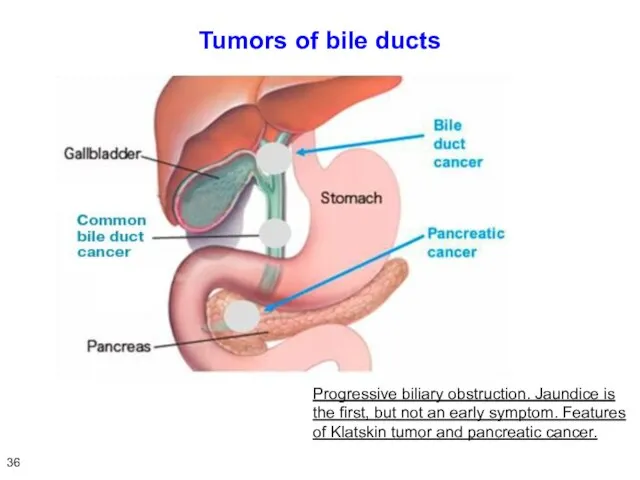
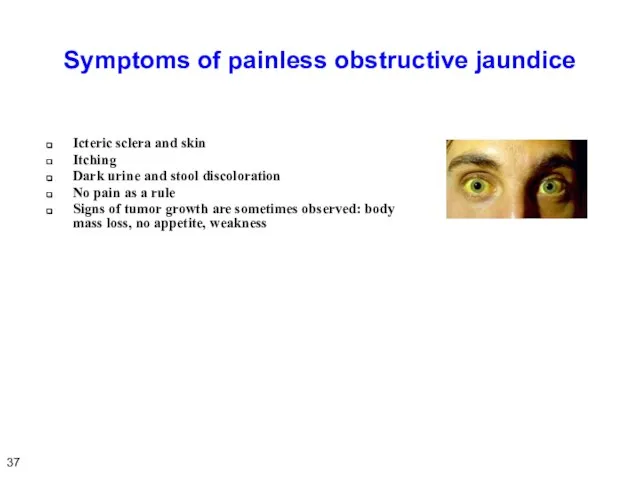
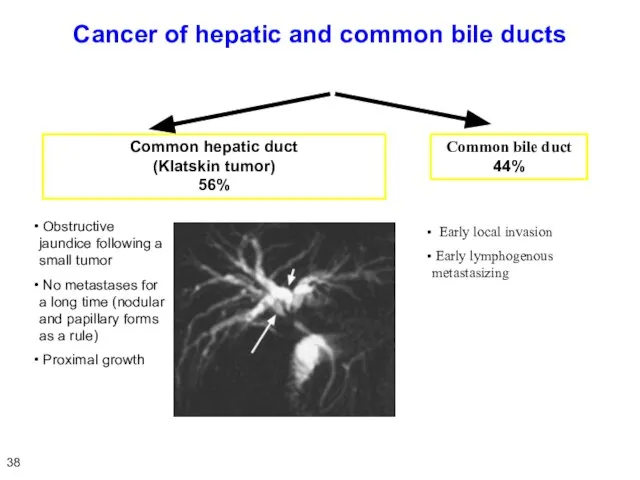
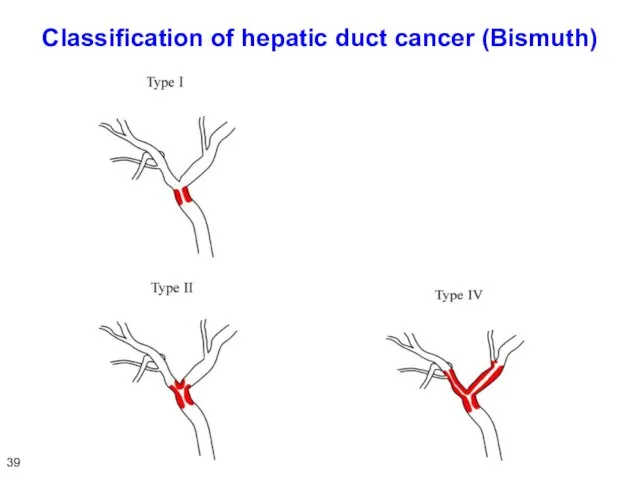
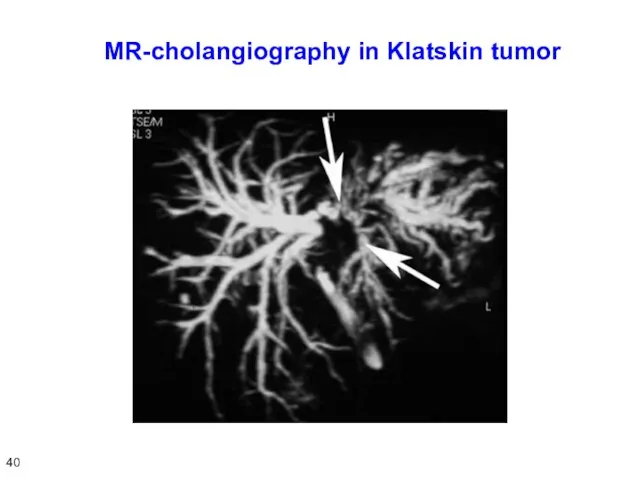
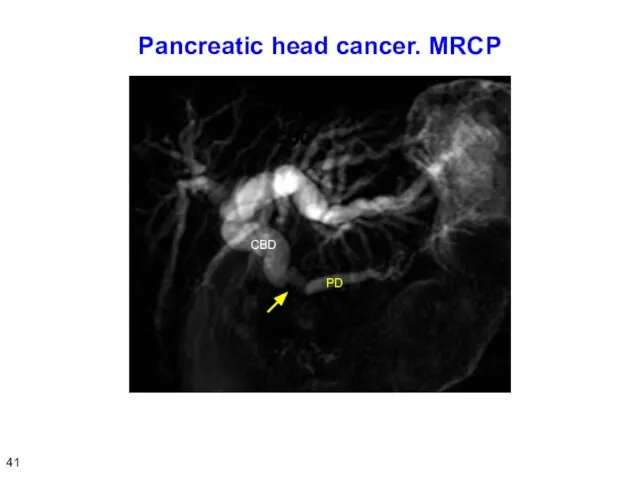
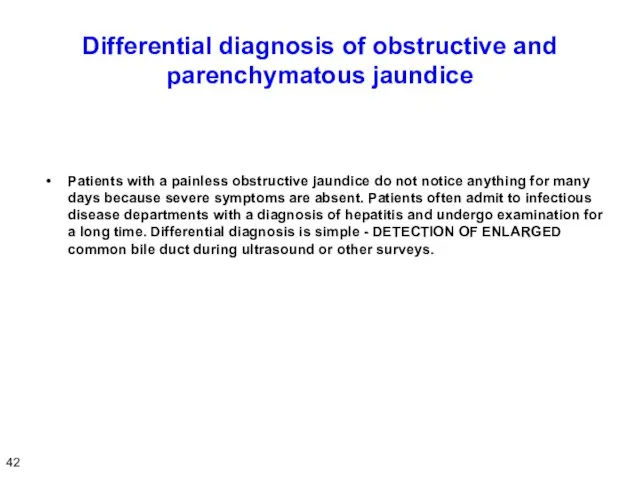

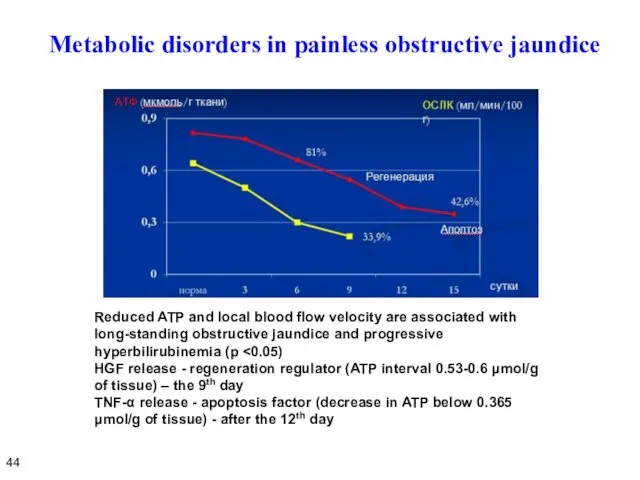
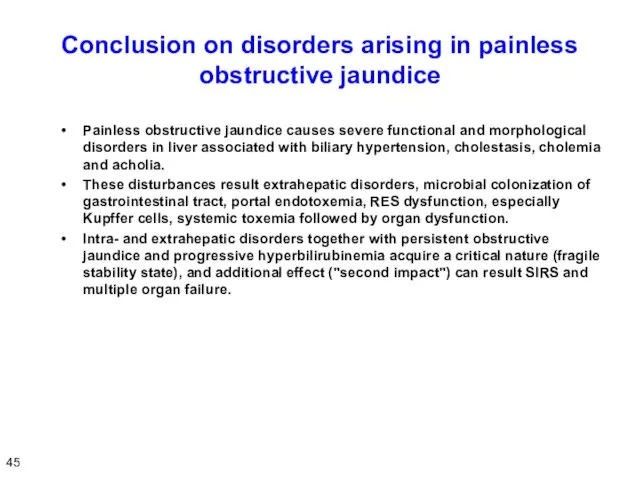
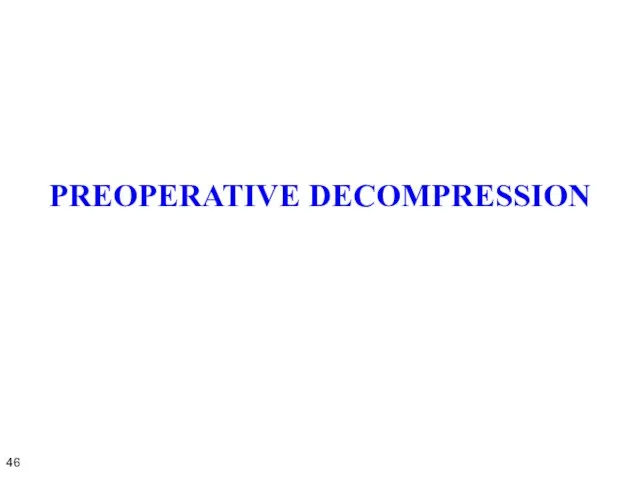
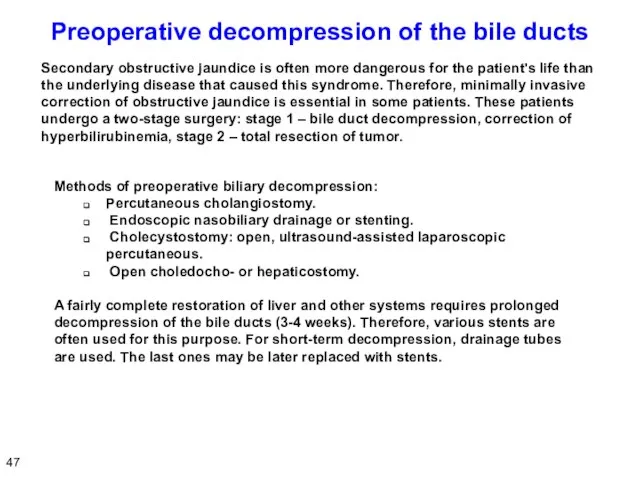
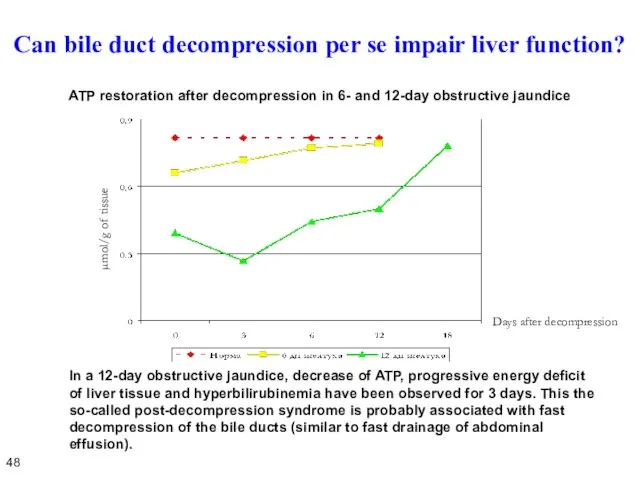
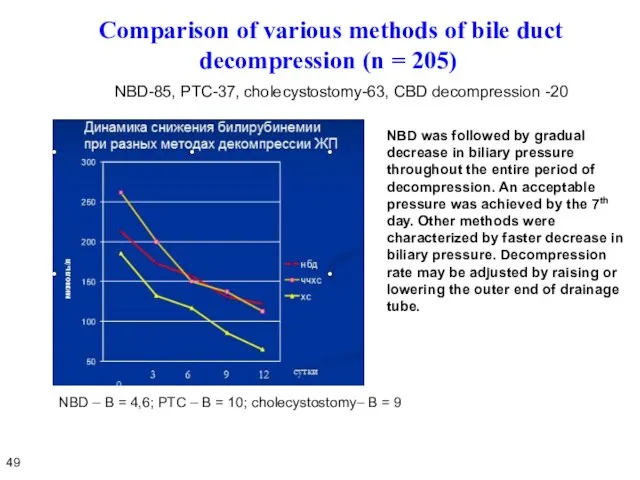


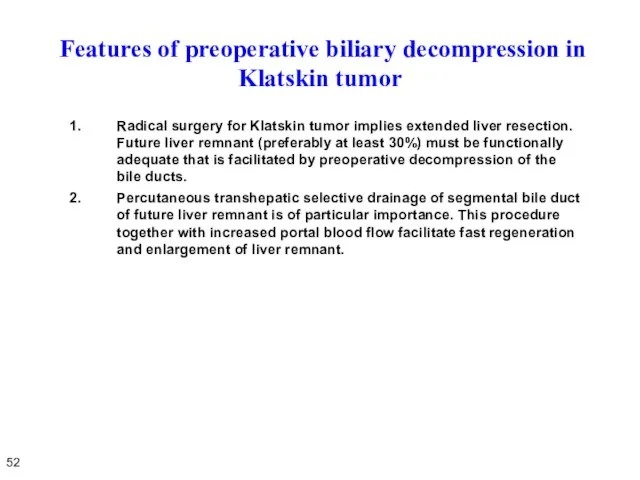
 Захворювання гіпофізу
Захворювання гіпофізу Череп. Строение черепа
Череп. Строение черепа Клиническая анатомия головы
Клиническая анатомия головы Этиологиясы белгісіз пневмония (Коронавирус)
Этиологиясы белгісіз пневмония (Коронавирус) Хирургическое лечение ЭД
Хирургическое лечение ЭД Использование средств нормированного страхового запаса территориального фонда обязательного медицинского страховани
Использование средств нормированного страхового запаса территориального фонда обязательного медицинского страховани Этиологическая структура бактериальных инфекций нижних дыхательных путей у пациентов стационаров
Этиологическая структура бактериальных инфекций нижних дыхательных путей у пациентов стационаров Ранняя реабилитация пострадавших на производстве в Саратовской области
Ранняя реабилитация пострадавших на производстве в Саратовской области Клиническая пищевая пробиотическая добавка для кошек и собак всех возрастов
Клиническая пищевая пробиотическая добавка для кошек и собак всех возрастов Влияние Covid-19 на дыхательную систему
Влияние Covid-19 на дыхательную систему Препараты, влияющие на артериальное давление
Препараты, влияющие на артериальное давление Гнойный паротит
Гнойный паротит Оказание первой помощи при различных видах кровотечений
Оказание первой помощи при различных видах кровотечений Историческое развитие шизофрении как отдельной нозологической единицы
Историческое развитие шизофрении как отдельной нозологической единицы Болезни легких
Болезни легких Влияние шума и музыки на здоровье человека
Влияние шума и музыки на здоровье человека Гипотермия и гипертермия
Гипотермия и гипертермия Выявление туберкулеза методом микроскопии. Приготовление препаратов из мокроты
Выявление туберкулеза методом микроскопии. Приготовление препаратов из мокроты Жаңадан синтезделген химиялық қосылыстың жедел уыттылығын скрининг деңгейінде зерттеу
Жаңадан синтезделген химиялық қосылыстың жедел уыттылығын скрининг деңгейінде зерттеу Фармацевтическая экспертиза рецептов на лекарственные средства
Фармацевтическая экспертиза рецептов на лекарственные средства Пластическая хирургия и трансплантология
Пластическая хирургия и трансплантология Санитарно-гигиеническое и противоэпидемическое обеспечение пассажирских перевозок
Санитарно-гигиеническое и противоэпидемическое обеспечение пассажирских перевозок Инфекционные заболевания и как их избежать
Инфекционные заболевания и как их избежать НПВС поражения слизистой оболочки гастродуоденальной зоны
НПВС поражения слизистой оболочки гастродуоденальной зоны Оказание первой реанимационной помощи, искусственное дыхание
Оказание первой реанимационной помощи, искусственное дыхание Психосоматика невроза
Психосоматика невроза Результаты лечения местнораспространеннного рака желудка с вовлечением поджелудочной железы
Результаты лечения местнораспространеннного рака желудка с вовлечением поджелудочной железы Лечение и реабилитация зависимых от психоактивных веществ
Лечение и реабилитация зависимых от психоактивных веществ